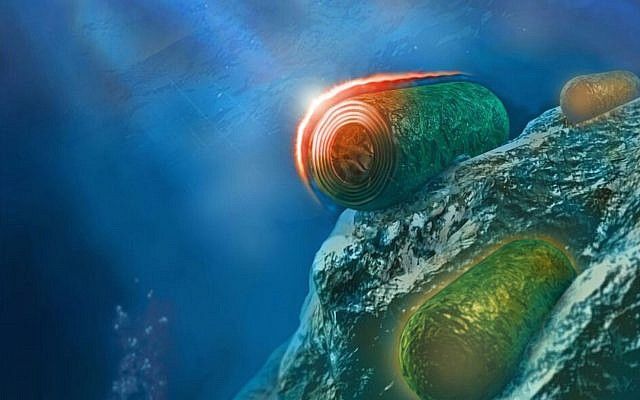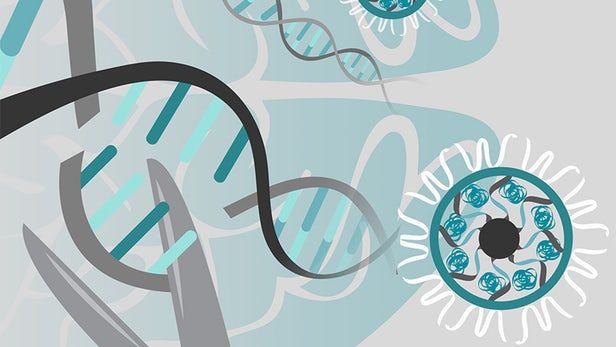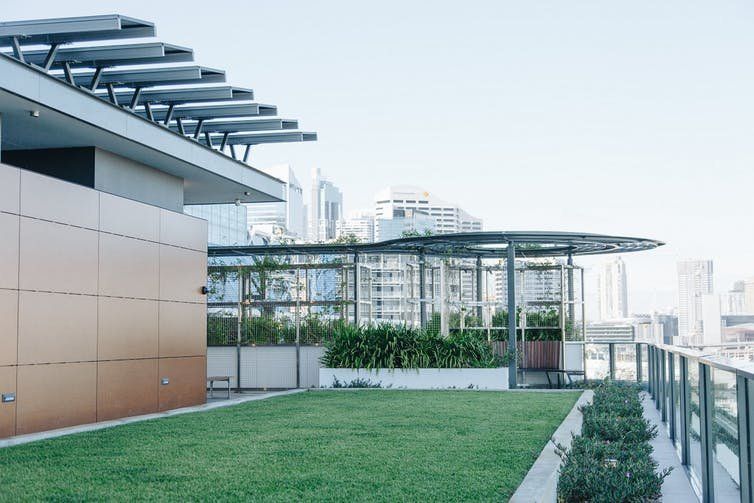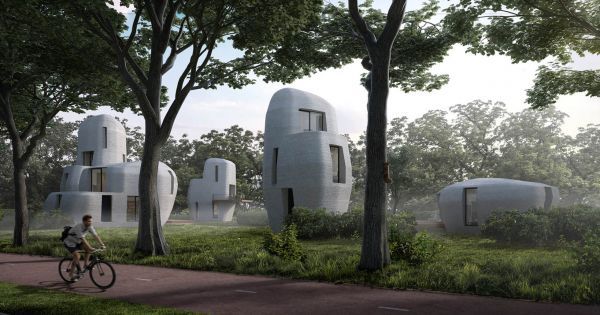Archive for the ‘habitats’ category: Page 101
Jun 29, 2018
Electricity from germs could be the next big thing, say Israeli researchers
Posted by Klaus Baldauf in categories: biotech/medical, engineering, habitats, nanotechnology, nuclear energy, solar power, sustainability
You can generate electricity from oil, you can produce it from natural gas, you can make it from nuclear energy, and you can channel it from the sun, via solar energy conversion systems. You can even generate electricity from photosynthetic bacteria, also known as cyanobacteria, based on a new innovation developed at the Technion. As published in a study in the journal, Nature Communications, the Technion researchers have developed an energy-producing system that exploits both the photosynthesis and respiratory processes that cyanobacteria undergo, with the harvested energy leveraged to generate electricity based on hydrogen.
The study was conducted by three Technion faculty members: Professor Noam Adir from the Schulich Faculty of Chemistry, Professor Gadi Schuster from the Faculty of Biology, and Professor Avner Rothschild, from the Faculty of Materials Science and Engineering. The work involved collaboration between Dr. Gadiel Saper and Dr. Dan Kallmann, as well as colleagues from Bochum, Germany and the Weizmann Institute of Science. It was supported by various bodies, including the Nancy and Stephen Grand Technion Energy Program (GTEP), the Russell Berrie Nanotechnology Institute (RBNI), the Technion Hydrogen Technologies Research Lab (HTRL), the Adelis Foundation, the Planning and Budgeting Committee’s I-CORE program, the Israel Science Foundation, the USA-Israel Binational Science Fund (BSF) and the German research fund (DFG-DIP).
Scientists have long considered cyanobacteria a possible energy source. Cyanobacteria belong to a family of bacteria common to lakes, seas, and many other habitats. The bacteria use photosynthetic mechanisms that enable them to generate energy from sunlight. They also generate energy in the dark, via respiratory mechanisms based on digestion and degradation of sugar.
Continue reading “Electricity from germs could be the next big thing, say Israeli researchers” »
Jun 28, 2018
Earth Views from the Space Station
Posted by Michael Lance in categories: habitats, satellites

Behold, the Earth! See live views of Earth from the coming to you by NASA’s High Definition Earth Viewing (HDEV) experiment.
Behold, the Earth! See live views of Earth from the International Space Station coming to you by NASA’s High Definition Earth Viewing (HDEV) experiment.
While the experiment is operational, views will typically sequence through the different cameras. If you are seeing a black image, the Space Station is on the night side of the Earth. If you are seeing an image with text displayed, the communications are switching between satellites and camera feeds are temporarily unavailable. Between camera switches, a black & gray slate will also briefly appear.
Jun 27, 2018
3D printed homes and pods of Martian rock, is this what life will look like on Mars?
Posted by Klaus Baldauf in categories: 3D printing, computing, Elon Musk, habitats, holograms, space, virtual reality
ELON MUSK wants to plump humans on Mars by 2024 and the first batch of settlers could live in 3D-printed home pods that pack hologram computers.
You’ll be able to tour the Red Planet habitat in virtual reality and view a scale model of the sci-fi living space at the Goodwood Festival of Speed next month.
Jun 26, 2018
New CRISPR-Gold technique reduces behavioral autism symptoms in mice
Posted by Genevieve Klien in categories: bioengineering, biotech/medical, genetics, habitats, neuroscience
A remarkable new study has successfully used the CRISPR-Cas9 gene editing technique to edit a specific gene in mice engineered to have fragile X syndrome (FXS), a single-gene disorder often related to autism. The single gene edit in the live mice resulted in significant improvements in repetitive and obsessive behaviors, making this the first time gene editing has been used to effectively target behavioral symptoms related to autism spectrum disorder (ASD).
FXS is a genetic disorder associated with intellectual disability, seizures and exaggerated repetitive behavior. Previous studies have shown that the repetitive behaviors associated with FXS are related to a specific excitatory receptor in the brain that, when dysregulated, causes exaggerated signaling between cells.
The CRISPR technique homes in on the gene that controls that excitatory receptor, the metabotropic glutamate receptor 5 (mGluR5), and essentially disables it, dampening the excessive signaling the corresponds with repetitive behaviors. In mice treated with the new system, obsessive digging behavior was reduced by 30 percent and repetitive leaping actions dropped by 70 percent.
Jun 25, 2018
Increase in storms could have ‘catastrophic impact’ on fishing industry
Posted by Genevieve Klien in categories: habitats, sustainability
Potential changes in the frequency and intensity of storms off the coast of the UK and around the world could have a “catastrophic impact” on the livelihood of fishermen and sustainability of fishing industries, research led by the University of Exeter has shown.
The research, based on a review of past studies and examination of future projections, warns that the increase in storms could make fishing more dangerous, displace fish from their natural habitats and interfere with the ability of fish to breed.
Storms off the coast of the UK are projected to become more frequent and intense over the next two centuries and more dramatic storms are expected in the North Sea and North Atlantic, to the West of the UK, Ireland and France, threatening the future of fishermen and the fish they catch.
Continue reading “Increase in storms could have ‘catastrophic impact’ on fishing industry” »
Jun 25, 2018
Australian cities are lagging behind in greening up their buildings
Posted by Bill Kemp in categories: business, energy, habitats, policy
Covering roofs and walls of buildings with vegetation is a good way of reducing greenhouse gas emissions. And these green roofs and walls make cities look nicer. Toronto’s central business district adopted a policy of establishing green roofs on around half of all city buildings in 2009. Research shows this could reduce maximum city temperatures by up to 5℃.
We spent the past 12 months analysing the case for more greenery on Australian city buildings, drawing on international comparisons. We’ve shown that a mandatory policy, coupled with incentives to encourage new and retrofitted green roofs and walls, will provide environmental, social and business benefits.
These include improved air quality, energy conservation and reductions in stormwater run-off from buildings, which would decrease flash flooding. Green roofs and walls also become new habitats for biodiversity and can be pleasant spaces for social interaction in dense urban areas.
Jun 22, 2018
How to Solve the Housing Crisis
Posted by Bill Kemp in categories: computing, engineering, habitats

Be one of the first 73 people to sign up with this link and get 20% off your subscription with Brilliant.org! https://brilliant.org/realengineering/
Listen to our new podcast at:
Showmakers YouTube channel at: https://goo.gl/Ks1WMp
Jun 15, 2018
Chinese satellite snags new views of Earth from lunar orbit
Posted by Alberto Lao in categories: habitats, satellites
On May 20, China launched Queqiao, a lunar communications relay satellite for the upcoming Chang’e 4 lander and rover mission. On the way out to the Moon, it dropped off a pair of small satellites bound for lunar orbit called Longjiang-1 and Longjiang-2. The satellites weigh just 45 kilograms each and measure 50-by-50-by-40 centimeters. Their purpose is testing out future radio astronomy and interferometry techniques, and one also has a camera built by Saudi Arabia.
Unfortunately, Longjiang-1 had a problem and didn’t make it into lunar orbit. Longjiang-2, however, was successful, and sent home a few pictures! Check them out:
Jun 14, 2018
A Dutch City Is 3D Printing The First Habitable Houses
Posted by Shailesh Prasad in categories: 3D printing, habitats
A Dutch construction company is about to 3D print five actually habitable homes near the city of Eindhoven. But can the technique replace brick and mortar?















